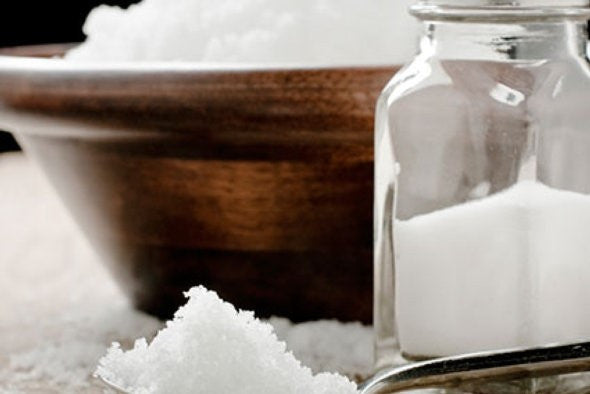
Plastic Contaminates Table Salt from Polluted Ocean Water
- By Sarah Everts, Chemical & Engineering News on October 29, 2015
Diners in China who season their meals with sea salt may be unwittingly consuming microscopic pieces of plastic pollution.
When researchers analyzed fifteen brands of common table salt bought at supermarkets across China, they found among the grains of seasoning micro-sized particles of the common water bottle plastic polyethylene terephthalate, as well as polyethylene, cellophane, and a wide variety of other plastics (Env. Sci.& Tech. 2015, DOI: 10.1021/acs.est.5b03163).
The highest level of plastic contamination was found in salt sourced from the ocean: The researchers measured more than 250 particles of plastic per lb of sea salt. The team, led by Huahong Shi of East China Normal University also found tiny particles of plastic in salt sourced from briny lakes, briny wells, and salt mines, although at lower levels—between 3 and 165 particles/ lb.
Shi and colleagues argue that plastic contamination originates from the vast amount of plastic pollution floating around marine environments where sea salt is sourced. For instance, bits of plastics might abrade from larger objects, such as water bottles, dumped in the water or they might come from cosmetic products, such as face washes, that use plastic microbeads as exfoliants. The researchers add that other points of entry for plastic contamination are also possible, including during salt processing, drying, and packaging.
Given that manufacturers typically extract sea salt from ocean water by evaporation—a process that leaves everything behind but water—microplastic contamination of sea salt is likely prevalent outside China as well, says Sherri Mason, who studies plastic pollution at the SUNY Fredonia. “Plastics have become such a ubiquitous contaminant, I doubt it matters whether you look for plastic in sea salt on Chinese or American supermarket shelves. I’d like to see some ‘me-too’ studies.”
According to Shi’s team, if a person were consuming Chinese sea salt at the maximal salt dose recommended by the World Health Organization, then that person would ingest about 1,000 plastic microparticles annually. This is still less than the estimated 11,000 particles of microplastic ingested annually in Europe by consumers of shellfish, which can get contaminated by the tiny bits of marine pollution, according to a report released last year.
Given that there are heavy metals and other chemicals of concern in plastic pollution, it’s wise to minimize the entry of plastic into the food chain, Mason adds.
This article is reproduced with permission from Chemical & Engineering News (© American Chemical Society). The article was first published on October 28, 2015.
SaveSaveSaveSave

